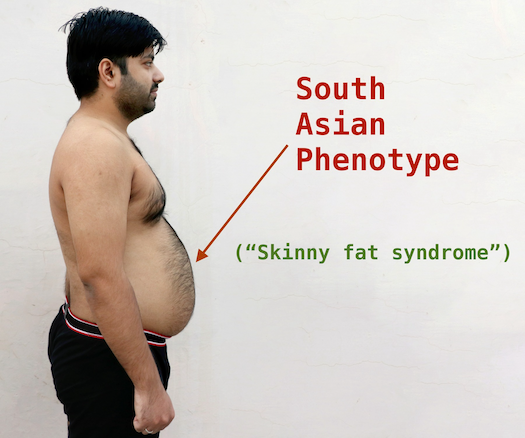
New Delhi — For generations, the Indian pot belly was a mark of status, comfort, and even humor. In literature and cinema, it signified a life of plenty, often used to depict bureaucrats, indulgent uncles, or politicians in satirical cartoons. In rural India, a protruding belly was once a clear indicator that a person “ate well,” a sign of prosperity in a country long familiar with food scarcity.
Today, however, this cultural icon has become a symbol of a mounting health crisis. India is experiencing a surge in obesity, with the pot belly—technically known as abdominal obesity—emerging as a particularly dangerous trend.
India recorded the world’s second-highest number of overweight
or obese individuals, totaling 180 million, second only to China.
A recent study in The Lancet projects that by 2050, this figure could reach 450 million, nearly one-third of India’s expected population. Abdominal obesity, characterized by excess fat around the waist, is more than a cosmetic issue. Medical research since the 1990s has established a strong link between belly fat and chronic diseases such as Type 2 diabetes and cardiovascular conditions. Unlike generalized obesity, which involves uniform fat distribution, abdominal obesity is concentrated around the trunk, posing unique health risks.
The National Family Health Survey, which uniquely measures waist and hip circumference, found that about 40% of Indian women and 12% of men have abdominal obesity. Among women aged 30 to 49, nearly half are affected. Urban populations are particularly at risk, with high waist-to-hip ratios serving as critical warning signs.
Indian health guidelines define abdominal obesity as a waist circumference exceeding 90 cm (35 inches) for men and 80 cm (31 inches) for women. The prevalence of this condition is rising rapidly, especially among children, raising alarms among healthcare professionals1.
One key factor behind the increase in belly fat is insulin resistance, where the body struggles to regulate blood sugar due to excess abdominal fat. This not only complicates diabetes management but also increases the risk of heart disease.

Research shows that South Asians, including Indians, tend to have more body fat than Caucasians at the same Body Mass Index (BMI), with fat accumulating around the trunk and under the skin rather than as visceral fat deep within the abdomen.
While this may mean less of the most dangerous visceral fat, studies suggest that inefficient fat storage can lead to fat infiltrating vital organs like the liver and pancreas, further increasing health risks.
The reasons for these fat distribution patterns are not fully understood.
Genetic studies have yet to identify a single responsible gene, but some experts suggest an evolutionary adaptation to historical famines, with the abdomen serving as a primary energy storage site. As food availability has increased, this adaptation may now be contributing to harmful levels of fat accumulation.
In response to the crisis, the Indian Obesity Commission has revised its criteria for obesity among Asian Indians, introducing a two-stage system that considers both fat distribution and associated health risks. The first stage involves high BMI and abdominal obesity without complications, where lifestyle changes such as diet and exercise are recommended. The second stage includes abdominal obesity with health complications, requiring more aggressive interventions, including new weight loss medications like semaglutide and tirzepatide.
Healthcare providers attribute the rise in abdominal obesity to lifestyle changes, including increased consumption of processed foods, takeout meals, and high-fat home cooking. Between 2009 and 2019, India saw one of the fastest increases in per capita sales of ultra-processed foods and beverages globally.
Experts stress that Indians may need to adopt more rigorous lifestyle changes than Western populations. While 150 minutes of weekly exercise may suffice for Europeans, South Asians are advised to aim for 250-300 minutes to counteract slower metabolism and less efficient fat storage. As Dr. Anoop Misra, a leading diabetes specialist, notes, “Our bodies simply aren’t as efficient at managing excess fat.”
The Indian pot belly, once a source of pride and humor, now serves as a stark warning. As obesity rates climb, urgent action is needed to address this growing public health emergency.
India’s Pot Belly: From Status Symbol to Public Health Crisis (April 15, 2025)
#IndiaHealthCrisis #PotBellyAwareness #ObesityIndia #BellyFatRisks
#PublicHealthIndia #IndianWellness #HealthTransformation
#ObesityAwareness #LifestyleChangeIndia #AbdominalObesity
Tags: urban health, obesity, pot belly, abdominal obesity, public health, diabetes,
India, lifestyle, health crisis, South Asia, cultural change, medical research,
Indian women, Indian men, exercise, diet, health policy, cardiovascular disease
